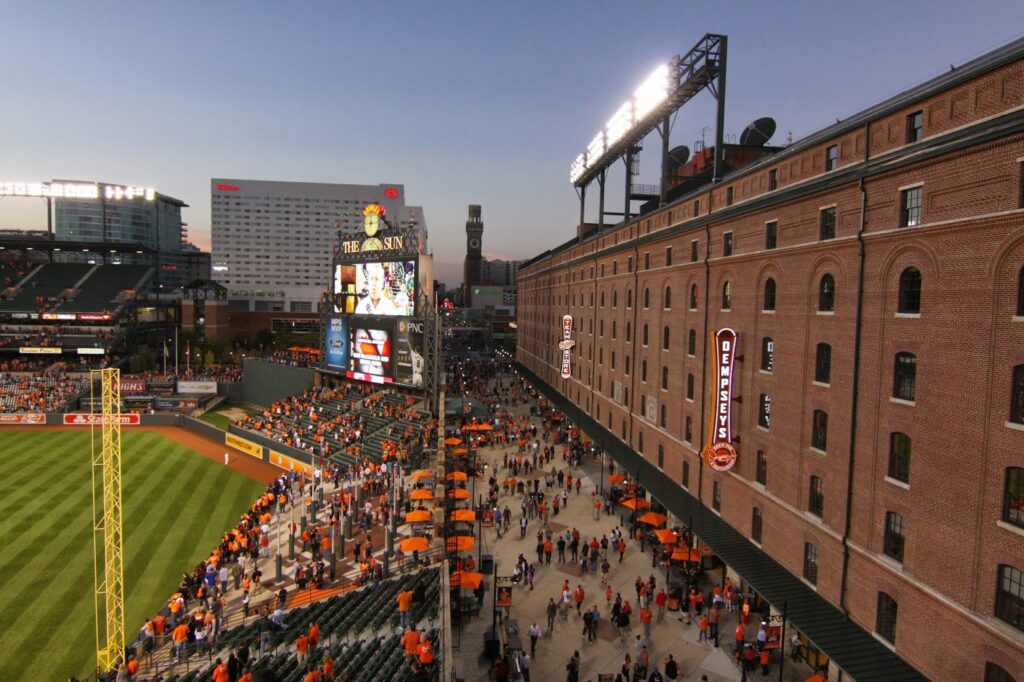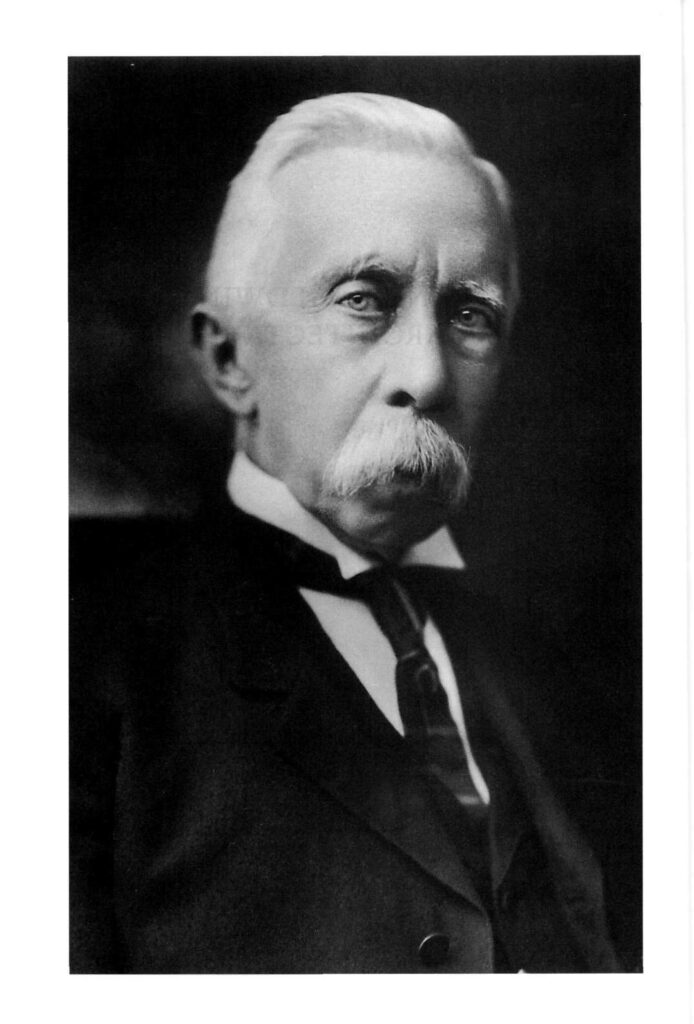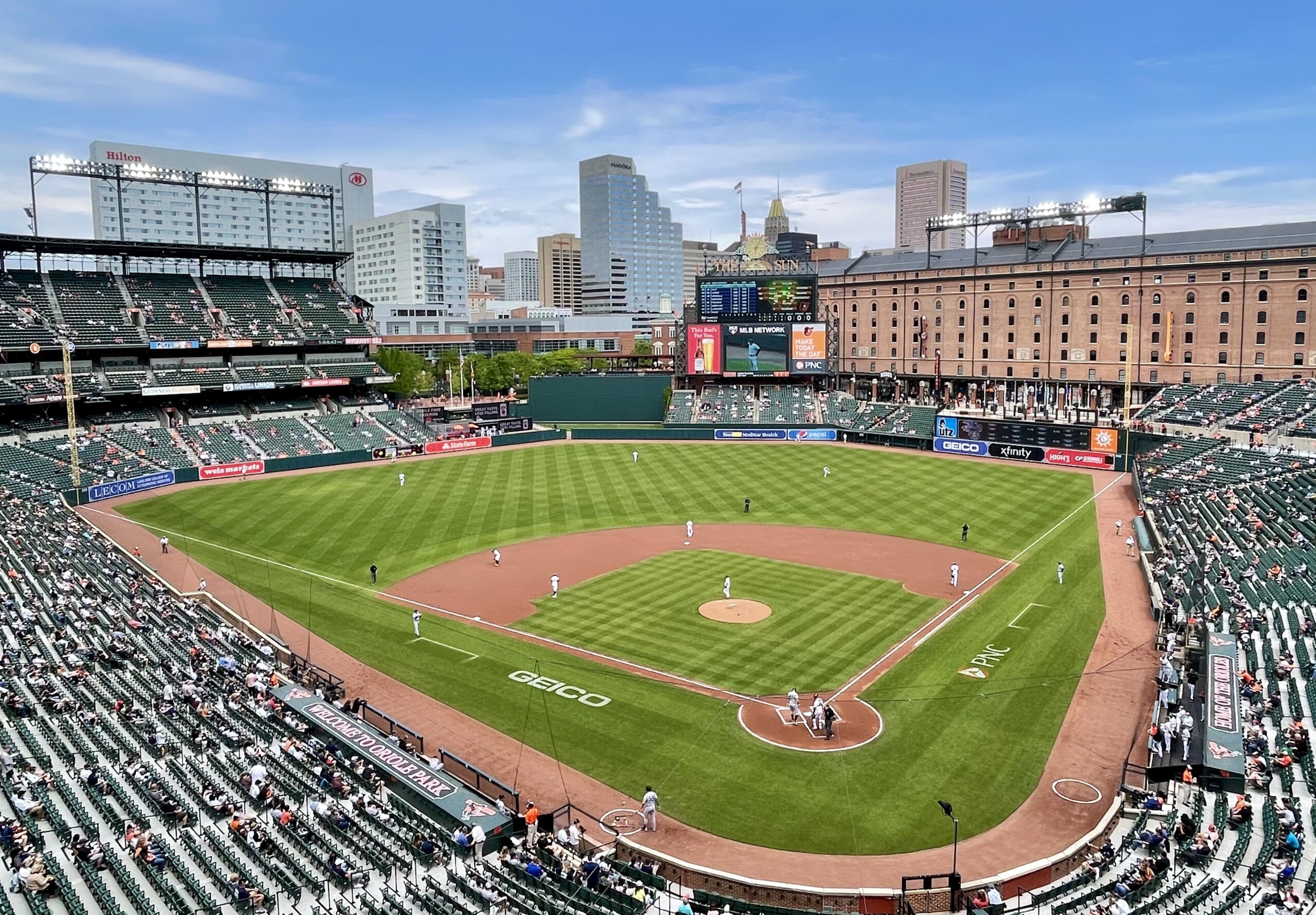Maryland’s historic architecture serves as the backdrop to our lives.
From ball games to baptisms, architecture quite literally shapes the way we experience life. Imposing edifices of stone or brick seem intransigent to humanity – but behind every imposing façade and cornice there is a rich history of us. Stories of architects and bricklayers and every soul that has passed through seem to permeate the walls with character.
For some of our most monumental structures, it can almost seem as if they have always been there – as if they stretch back to some time immemorial. Camden Yards – the former shops of the Baltimore & Ohio Railroad – a stunning red brick curtain of a building that envelopes the modern-day Oriole Park at Camden Yards (the ballpark of the Baltimore Orioles) is one of those places. It’s edifice so imposing that it feels as if perhaps the city sprung up around it, and not the other way around. It is at once equally magnificent as it is rugged, utilitarian as it is graceful – much like the city that it calls home.

According to our colleagues in preservation at Baltimore Heritage, “Construction on the [Camden Yards] warehouse started in 1899. Architect E. Francis Baldwin likely served as the architect having designed warehouses for the B&O at Locust Point in 1879-80 and at Henderson’s Wharf in Fell’s Point in 1898.”

Like so much else in so-called, Smalltimore, Baldwin was the architectural mind behind many other similarly imposing and timeless structures across the city and state. The list of his architectural achievements is long, and many structures are beloved by Baltimoreans, from his 1884 central roundhouse at the current B&O Railroad Museum, to the ca.1875 B&O passenger station at Point of Rocks, and the Hutzler Brothers Palace Building on North Howard Street.
In addition, Baldwin, a devout Catholic, served as the architect on numerous churches, some of the most notable including The Shrine of the Sacred Heart, Mount Washington, Baltimore, St. Leo’s Church in the Little Italy neighborhood of East Baltimore (1881), and the stunning Cathedral Basilica of St. John the Baptist in Savannah, Georgia, which represents some of the highest style and magnificent architecture in his entire portfolio.

Cathedral Basilica of St. John the Baptist
Of course, none of these grand architectural visions could have been built without the trained hands of scores of talented tradespeople – from bricklayers and masons to carpenters, roofers, and dozens of other specialized trades since lost to the efficiencies of modernity. Together, they built the Baltimore and Maryland we know and love today – and which will serve as the backdrop to another year of Orioles baseball, thanks, in part to another architect: Janet Marie Smith. It was Smith, who in the late 1980s built on Baldwin’s vision and united historic and modern construction in an adaptive reuse of the existing shop buildings to construct one of America’s most beloved ballparks.
Maryland’s historic architecture, indeed, serves as the backdrop to our lives. Lives made richer thanks to the vision of architects, the hands of tradespeople – and the preservationists who work to keep it all standing.

